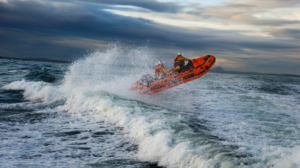
Lifeboat crews accuse RNLI of complacency over migrant crossings

RNLI lifeboat crews dealing with small boats crossing the Channel say they lack equipment, guidance, qualified staff and support in coping with trauma. They’ve accused managers of complacency over the situation.
Crews need bigger liferafts, more personnel, increased training for mass casualty events (like 30 people in the water), and better onboard welfare facilities for rescued people according to a Guardian exclusive.
The paper’s report says crews have told the paper they lack equipment and up-to-date guidance, amid a shortage of qualified staff to deal with the extra workload, and inadequate mental health support.
Seemingly internal RNLI documents seen by the Guardian warn crews against picking up more people than they can safely carry. The biggest lifeboats have a capacity to carry 96 people however a previous rescue by Eastbourne lifeboat rescued 104 people in one operation.
A memo said exceeding boat limits: “is something that we cannot allow to continue … If exceeded you will be putting yourselves, crew and casualties at risk.”
Official guidance on how to handle the small boats was limited to a seven-page document that was years out of date, a source told the Guardian.
The paper says that the organisation’s management is split over the immigrant crisis with some wanting to mount a robust defence of the humanitarian role, but others nervous that this will anger some traditional supporters.
“We have measures in place to support our people, including a 24/7 staff support service and a peer-led trauma-focused post-incident intervention called TRiM. We are constantly looking at new ways we can support our people to ensure they have the best possible care, protection, equipment, and training available to them,” Simon Ling, the RNLI’s head of lifeboats, told the paper.
“Our crews in south-east England are engaged in an increasing level of humanitarian work as a result of more men, women and children crossing one of the world’s busiest shipping lanes using unseaworthy boats. They have responded in a humbling way to this increase in demand with continued dedication, commitment, and compassion.”
